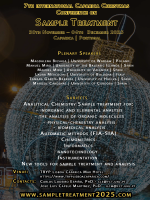Comparative analyses of the complete mitochondrial genomes of the two filarial worms Wuchereria bancrofti & Brugia malayi with Caenorhabditis elegans
DOI:
https://doi.org/10.5584/jiomics.v12i1.212Keywords:
Comparative Genomics, Filariasis, Nematodes, genome alignmentAbstract
Wuchereria bancrofti and Brugia malayi are the filarial worms belonging to phylum Nematoda and cause lymphatic filariasis (LF) disease in humans. W. bancrofti and B. malayi are Wolbachia dependent organisms while C. elegans is free living Wolbachia independent nematode. In order to investigate the conserved regions present in the mitochondrial genome of these organisms, the complete mitochondrial (mt) genomes of W. bancrofti and B. malayi having size 13,636 bp and 13,657 bp in length, respectively are compared with C. elegans (13794 bp). These mt genomes were similar to each other in respect of their size, AT content and encode the same 12 PCGs (nad1–6, nad4L, cytb, cox1–3, and atp6). Complete mt genome alignment identified 13 conserved regions in each of the organisms with some of these regions unique only to one organism. Phylogenetic analysis using the mt genome showed a close relationship between W. bancrofti and B. malayi but showed a common early ancestor with the C. elegans emphasizing an early evolutionary divergence.
Downloads
Published
Issue
Section
License
Copyright (c) 2022 Journal of Integrated OMICS

This work is licensed under a Creative Commons Attribution 4.0 International License.








